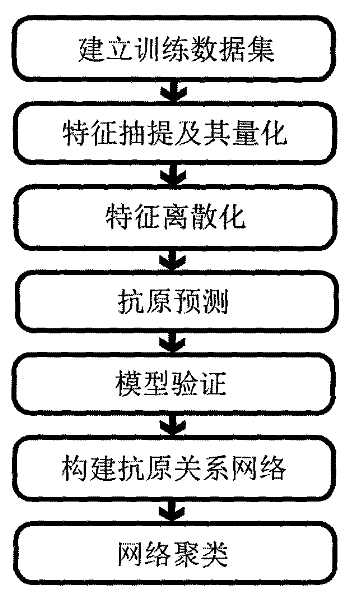Method for predicting flu antigen through model and application thereof
An influenza antigen and model prediction technology, applied in special data processing applications, instruments, electrical digital data processing, etc., can solve problems such as poor results and achieve high sensitivity
- Summary
- Abstract
- Description
- Claims
- Application Information
AI Technical Summary
Problems solved by technology
Method used
Image
Examples
Embodiment Construction
[0026] The method for predicting influenza antigen by model of the present invention, its preferred specific embodiment is, comprises:
[0027] The model constructed by the following table 1 and formula (1) predicts antigenic similarity or antigenic variation between virus pairs:
[0028] Extraction of 12 features affecting influenza antigens: the number of mutations in five epitope amino acids, the five physicochemical properties of HA protein amino acids, factors affecting receptor binding, the number of glycosylation site changes, the HA protein The five physical and chemical properties of amino acids include hydrophobicity, volume change, chargeability, polarity, and buildable surface area;
[0029] The above 12 characteristics were counted on 3681 pairs of virus pairs with known antigenic similarities and 1720 pairs of virus pairs with antigenic mutations, and obtained:
[0030] Table 1:
[0031]
[0032] The data in Table 1 represent the number of large and small ch...
PUM
 Login to View More
Login to View More Abstract
Description
Claims
Application Information
 Login to View More
Login to View More - R&D
- Intellectual Property
- Life Sciences
- Materials
- Tech Scout
- Unparalleled Data Quality
- Higher Quality Content
- 60% Fewer Hallucinations
Browse by: Latest US Patents, China's latest patents, Technical Efficacy Thesaurus, Application Domain, Technology Topic, Popular Technical Reports.
© 2025 PatSnap. All rights reserved.Legal|Privacy policy|Modern Slavery Act Transparency Statement|Sitemap|About US| Contact US: help@patsnap.com



